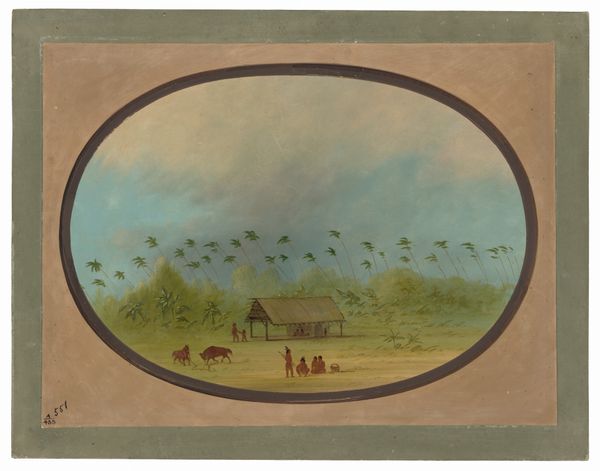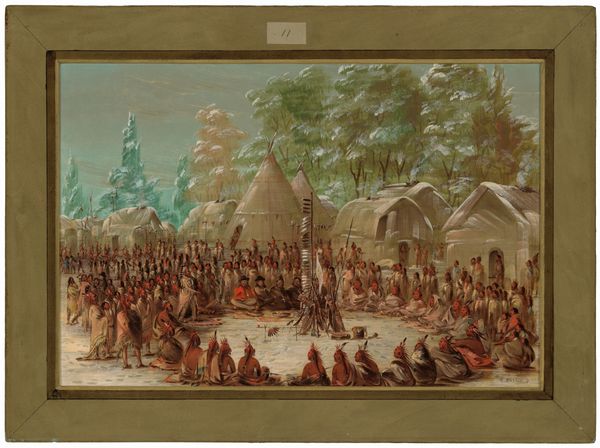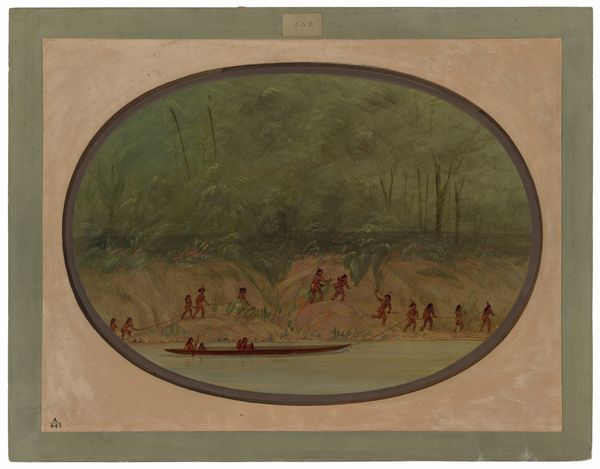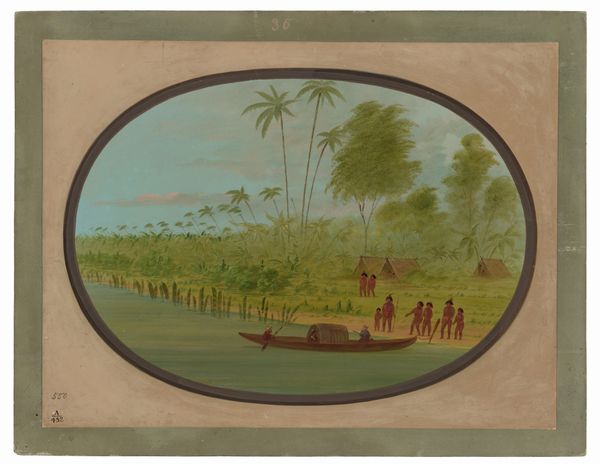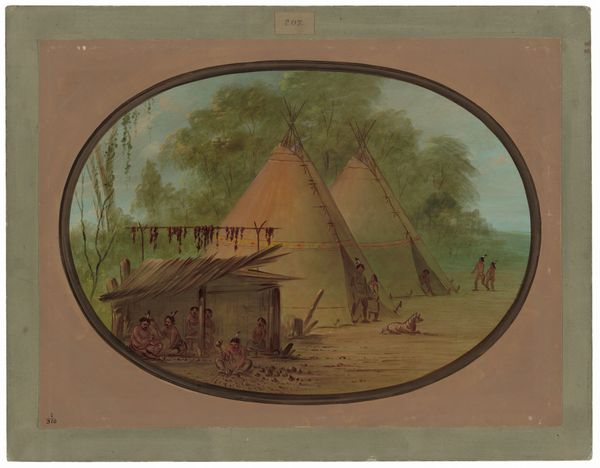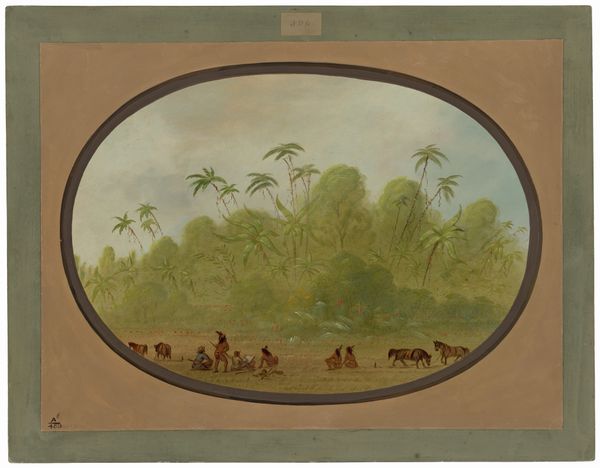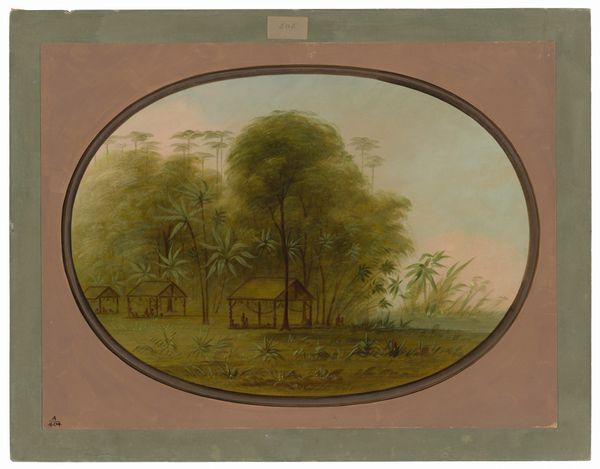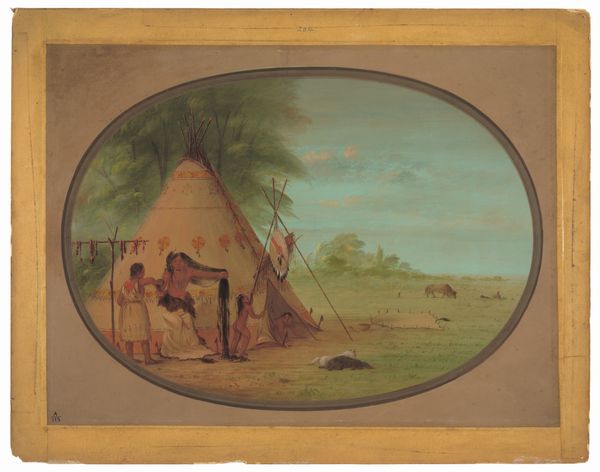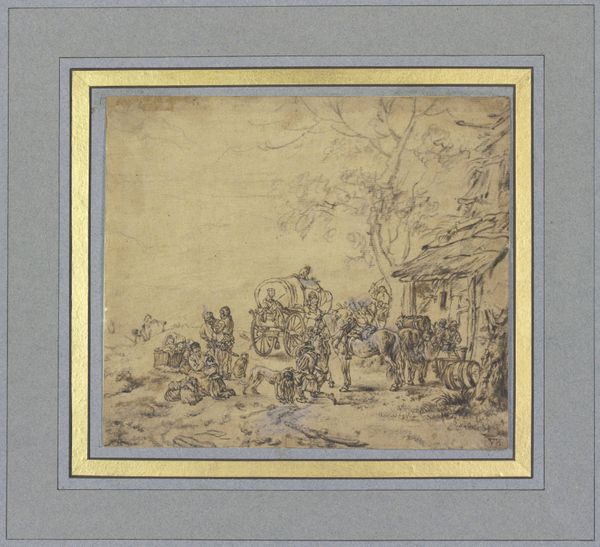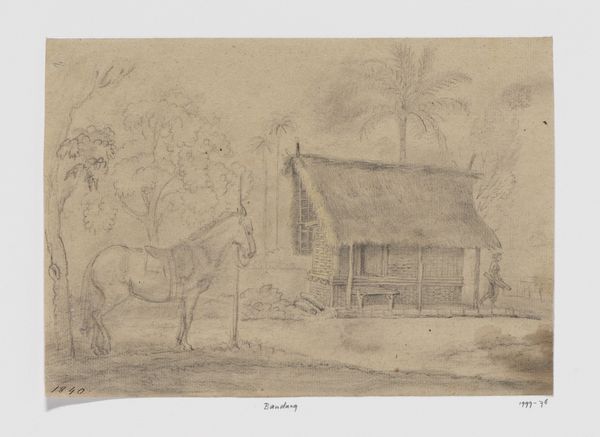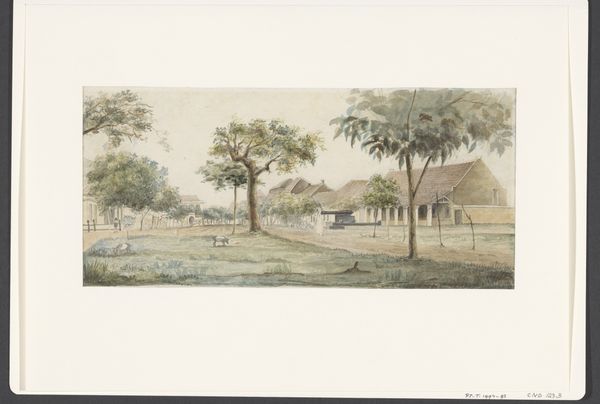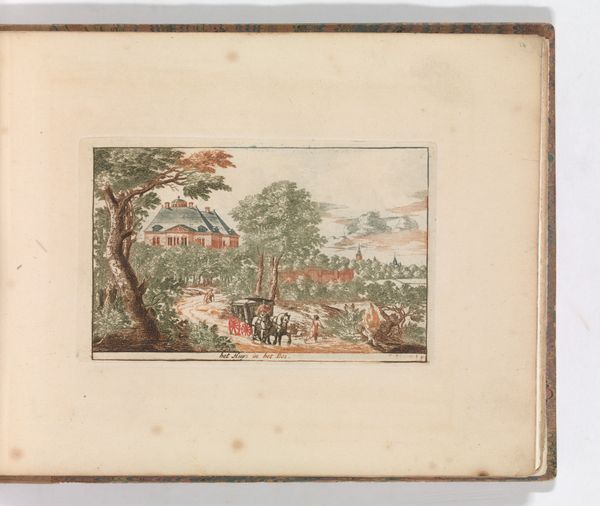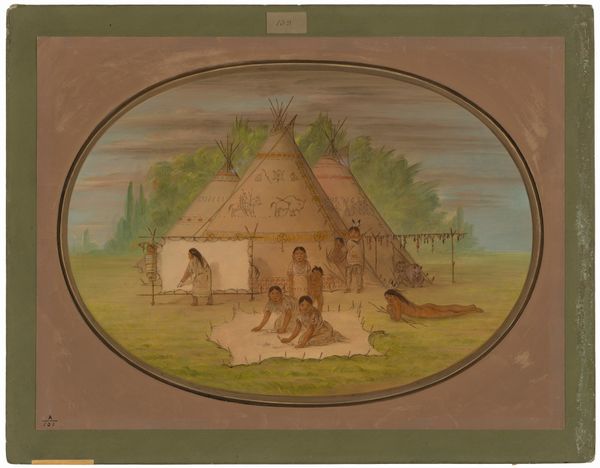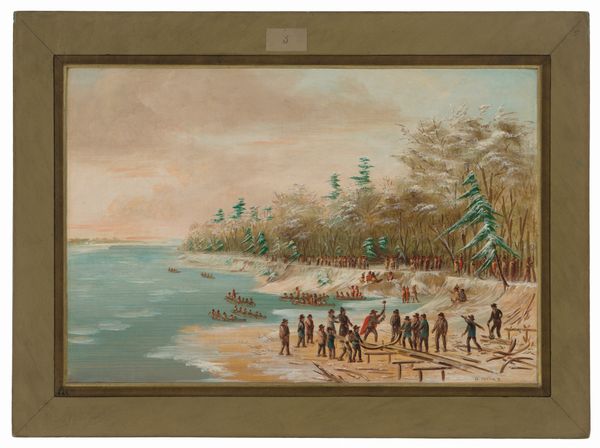
papier-mâché
water colours
oil painting
coloured pencil
papier-mâché
watercolor
indigenous-americas
Dimensions: height 49 cm, width 69 cm, depth 22 cm
Copyright: Rijks Museum: Open Domain
Curator: This diorama presents a scene of daily life: “Diorama of a Carib Camp," created around 1810 by Gerrit Schouten. Schouten, a local artist, used watercolors to bring this intricate composition to life. What’s your first take? Editor: There’s a striking stillness despite the depiction of numerous figures. The muted color palette adds to this sense of suspended time. It feels almost dreamlike. Curator: Interesting, the effect of the palette creates a unique ambiance. What is actually striking is that these dioramas by Schouten played an important role in documenting the diversity of peoples of Suriname during that colonial period. Editor: The thatched roofs and the activities of the figures provide us with a view into a specific moment. Are there specific iconographic symbols that appear often in indigenous representations of that time? Curator: The portrayal of Indigenous people in their settlements was a common theme, however, what’s different here is the scale and details – almost anthropological study. It moved from romanticized painting to a snapshot of society and this reveals changing perceptions and greater engagement in colonial social dynamics. Editor: It feels so constructed. Every object is given attention. You get this amazing impression, also. The almost forced snapshot of native activity raises issues on what representation can actually look like in post colonial discussion. Curator: Right, but within that construct it offered something the formal portraits or landscape paintings didn't. Editor: And by placing this Carib camp in a box of sorts, isn't Schouten really reflecting the views of the colonizing populations who saw that they were observers? Curator: Precisely! And this approach mirrors the rise of ethnographic studies in the 19th century, where other cultures were observed. Editor: Looking at this work I think it presents questions rather than answers when approaching the historical representation. It is up to us, almost like archeologists to sift and find new connections to culture. Curator: Absolutely, the beauty of art like this lies in its layered context, urging us to critically examine history and cultural exchanges.
Comments
This diorama presents an everyday scene in a Carib settlement along a river. The men are building a hut or returning from hunting, while the women prepare food and care for the children. On the right they are making bread from cassava, a tuberous root. Baskets are being brought ashore from the corial (dugout canoe) along the bank.
Join the conversation
Join millions of artists and users on Artera today and experience the ultimate creative platform.
